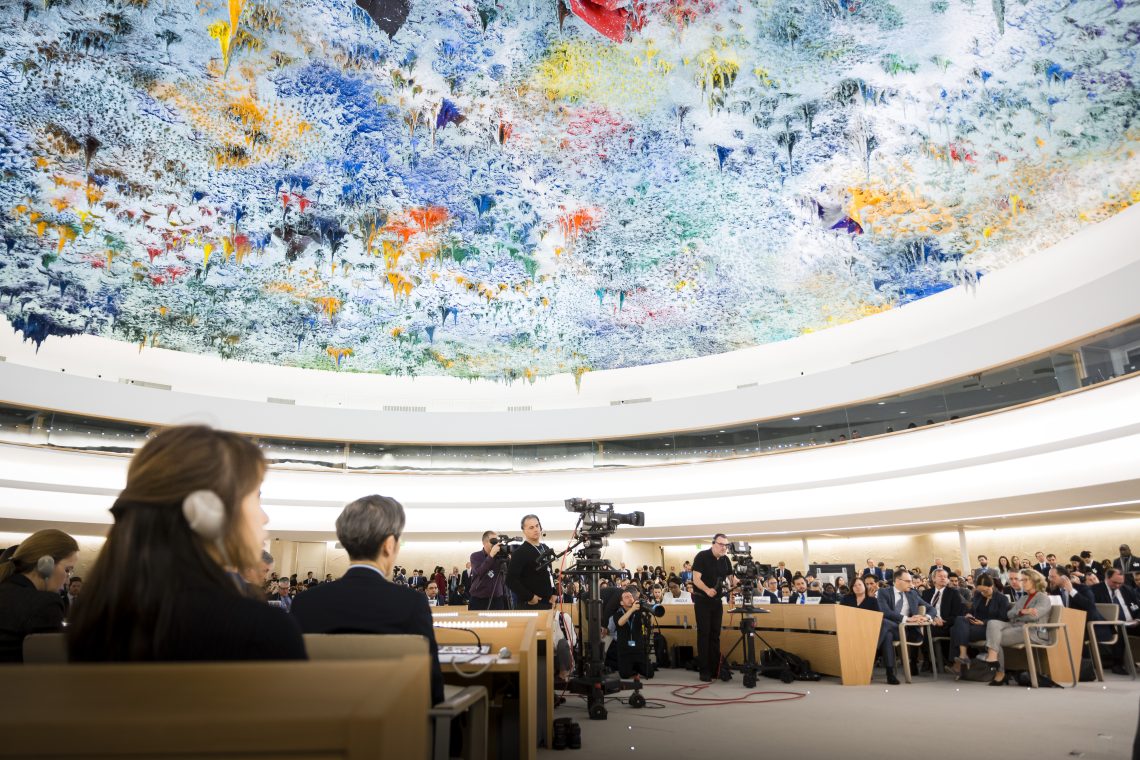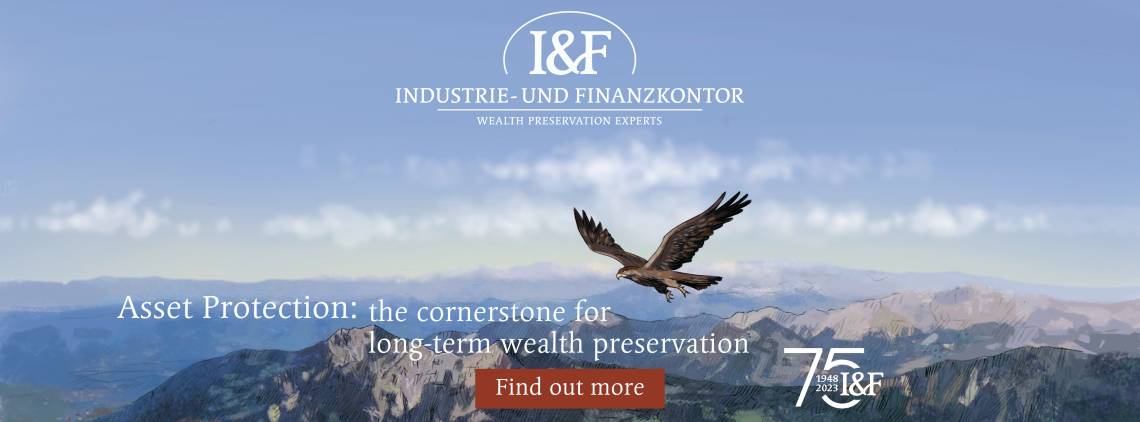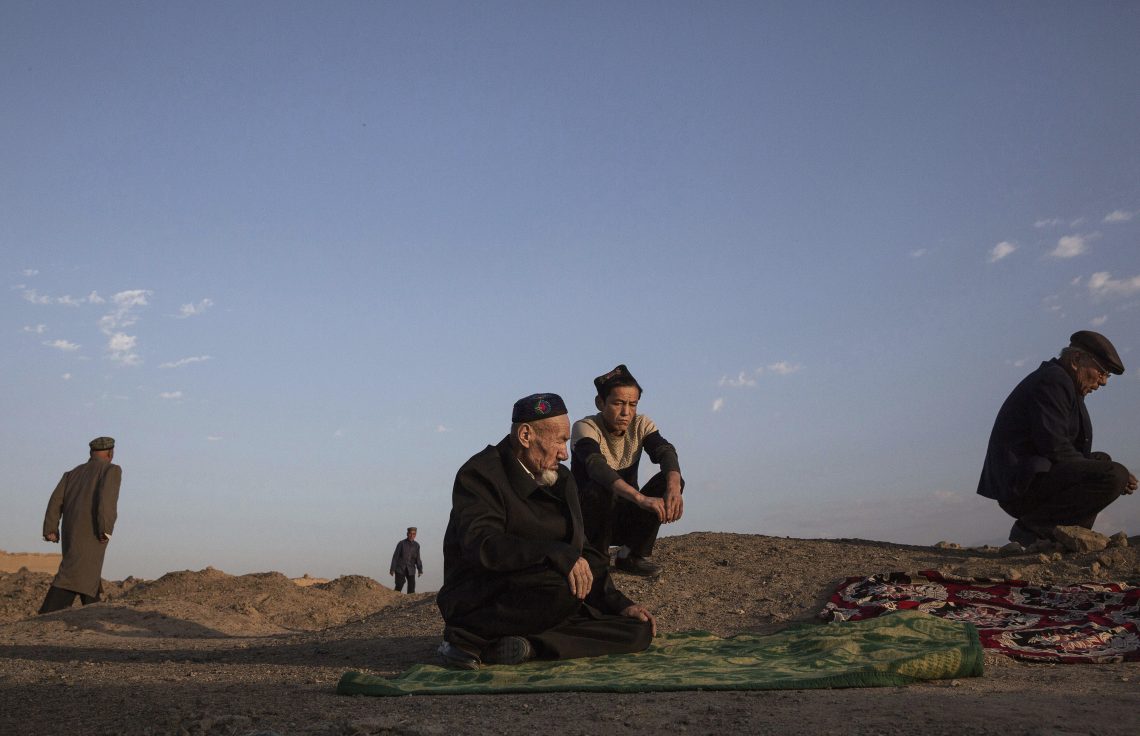The UN Human Rights Council is broken
The Human Rights Council of the United Nations is unable to confront serious human rights situations evenhandedly.

In a nutshell
- The UN Human Rights Council ignores serious crimes
- It is also biased against certain countries
- Prospects for improvement are poor
The United Nations Human Rights Council (HRC) was established in 2006 by the UN General Assembly. In 2005, Secretary-General Kofi Annan had called for an end to the discredited Commission on Human Rights, which, in his words, had “cast a shadow on the reputation of the United Nations system as a whole.”
Unfortunately, the record shows that the HRC has not performed better than the discredited Commission. It too has failed to confront the world’s most serious human rights situations in an unbiased manner. Although several governments have been willing to criticize the HRC for its shortcomings, the prospects for UN member states to take action to address them are slight.
The General Assembly, when it established the HRC, charged the organization with specific responsibilities. In addition to serving as a forum for human rights discussions and education, engaging with governments to promote and protect human rights and making recommendations to the General Assembly on human rights-related issues in international law, the HRC is assigned three primary mandates:
- Promote “universal respect for the protection of all human rights and fundamental freedoms for all, without distinction of any kind and in a fair and equal manner”
- “Address situations of violations of human rights, including gross and systematic violations, and make recommendations thereon”
- Undertake a “universal periodic review (UPR), based on objective and reliable information, of the fulfillment by each State of its human rights obligations and commitments in a manner which ensures universality of coverage and equal treatment with respect to all States …”
At first glance, the HRC seems to be fulfilling its mandate. It meets three times a year, supplemented by occasional special sessions on urgent human rights situations and multiple meetings each year for the UPR. It is even sometimes able to pass resolutions condemning countries for violations, appoint human rights experts to investigate countries like North Korea for human rights violations and adopt resolutions to assist willing governments, like Georgia.

But when it comes to tough cases and issues concerning influential governments, the HRC too often demonstrates bias in its work – holding some countries to higher standards than others, and routinely ignoring serious human rights situations that are as bad or worse as those it denounces.
Facts & figures
The structure of the UN Human Rights Council
There are 47 seats on the UN Human Rights Council. Members are elected by a majority vote in the General Assembly in a secret ballot. Members serve for three years and are not eligible for immediate reelection after two consecutive terms and must remain off the HRC for at least a year. Elections are staggered so that a third of the HRC membership is elected each year. Seats are geographically allocated: 13 African seats, 13 Asia-Pacific seats, 6 Eastern European seats; 8 Latin American and Caribbean seats; and 7 seats for the group of Western European and other nations. Current members are:
- African states: Algeria, Benin, Cameroon, Eritrea, Gabon, Gambia, Ivory Coast, Malawi, Morocco, Senegal, Somalia, South Africa and Sudan.
- Asia-Pacific states: Bangladesh, China, India, Kazakhstan, Kyrgyzstan, Malaysia, Maldives, Nepal, Pakistan, Qatar, United Arab Emirates, Uzbekistan and Vietnam.
- Eastern European States: the Czech Republic, Georgia, Lithuania, Montenegro, Romania and Ukraine.
- Latin American and Caribbean states: Argentina, Bolivia, Chile, Costa Rica, Cuba, Honduras, Mexico and Paraguay.
- Western Europe and other states: Belgium, Finland, France, Germany, Luxembourg, United Kingdom and the United States.
Disproportionate focus on Israel
The most obvious example of bias is the HRC’s disproportionate focus on Israel. Alone among the world’s countries, Israel is subject to a separate item of the HRC agenda: Agenda Item 7, titled “Human rights situation in Palestine and other occupied Arab territories.” Every other human rights situation is examined under Agenda Item 4, titled “Human rights situations that require the Council’s attention.”
In addition, the HRC currently has 14 “country mandates” that focus on human rights situations in individual countries, such as North Korea and Iran. All these country mandates are subject to periodic renewal except for the “Special Rapporteur on the situation of human rights in the Palestinian territories occupied since 1967,” which remains in place “until the end of the Israeli occupation.”
Since 2006, the HRC has adopted between four and eight resolutions condemning Israel annually. According to a database compiled by UN Watch, Israel was the focus of 103 of 280 condemnatory resolutions (37 percent) adopted by the HRC from 2006 through May 2023. In 2022, Israel was condemned more often than Afghanistan, Myanmar, North Korea and Syria. Only Russia was condemned as many times as Israel by the HRC that year. Although some condemnatory resolutions contain praise, this rarely happens for Israel: 102 of 210 total condemnatory resolutions lacking any praise (49 percent) adopted by the HRC from 2006 to May 2023 focused on Israel.
Despite poor human rights records, China, Cuba, Pakistan, Saudi Arabia, Zimbabwe and many other governments have never been condemned by the HRC. Yet the body has condemned the U.S., whose human rights record is far superior to those nations.
No country should be beyond scrutiny nor subject to undue examination. Both the disproportionate focus on Israel and the failure to condemn serious human rights violations in other countries are blatant violations of the Human Rights Council’s mandate to be “guided by the principles of universality, impartiality, objectivity and non-selectivity.”
Turning a blind eye to human rights violations
Despite being specifically instructed to address violations of human rights and, specifically, gross and systematic violations, the HRC too often fails to do so. The worst oversight is China. Human rights organizations have documented heinous human rights abuses perpetrated by the Chinese government on its citizens, including pervasive censorship, denial of the rights to freedom of association and religion, violent crackdowns on democracy activists in Hong Kong, and arbitrary arrest, detention and execution.
The U.S. and other governments have concluded that Beijing is committing genocide and crimes against humanity against ethnic and religious minorities in Xinjiang. A 2022 report by the Office of the UN High Commissioner for Human Rights (OHCHR) concluded that “serious human rights violations” against the Uighur and “other predominantly Muslim communities” have been committed by China. Yet the HRC has been unwilling or unable to condemn China in its 17-year history. In fact, last October, the HRC voted down an effort to even hold a “debate” on the OHCHR report.
More by Brett Schaefer
What role should the G20 play?
A narrow path to reforming the UN Security Council
Universal human rights reviews
Even those who strongly support the HRC will occasionally acknowledge its bias and denounce failings like the vote to ignore China’s crimes against Muslims in Xinjiang. However, they defend the HRC as an improvement on its predecessor. A common example used to illustrate the point is that unlike under the old Commission, every country is subject to human rights consideration every four years under the Universal Periodic Review (UPR).
However, too often, the UPR provides an opportunity to obscure rather than reveal problems. According to Human Rights Watch, China’s 2018 review was:
“marred by the U.N.’s own complicity with China’s quest for a critique-free review. While accepting – seemingly without question – contributions from groups that praised China’s rights record, UN officials removed without explanation the submissions from Hong Kong, Tibetan, and Uyghur groups that are critical of Beijing. Many of the excluded contributions were reinstated at the eleventh hour, but the damage was done.”

There is no accountability in the UPR process or means to reject falsehoods. According to a database compiled by UPR Info, over the past three cycles of the UPR, the U.S. has received far more recommendations (1,025) for improving its human rights than any other country, which would imply that the U.S. human rights record is the worst in the world. Cuba (890), Egypt (867), Iran (849), and China (809) trail significantly. Although the U.S. is far from perfect, any process that ranks U.S. human rights concerns as more troubling than these authoritarian regimes cannot be considered objective.

Impediments to reform
Why does the HRC fall short? In a word, the membership structure. The resolution that established the HRC, General Assembly Resolution 60/251, sets minimal criteria for election. While the UN member states are supposed to “take into account the contribution of candidates to the promotion and protection of human rights and their voluntary pledges and commitments” when electing HRC members, the human rights record of a nation, no matter how terrible, is not disqualifying. All it takes is a majority vote in the General Assembly (currently 97 of 193 member states) in a secret ballot.
Regional blocs frequently game the system through “clean slate” elections (offering the same number of candidates as there are open seats). This practice makes it easier for repressive states to win seats on the Council because there is no competition. But even democracies are not immune to this temptation, as illustrated by the U.S. pushing Italy out to ensure election in 2021.
With these dynamics in place, it is hardly surprising that nondemocratic countries – those ranked “partly free” or “not free” by Freedom House – have made up a majority of the HRC in all but three years since it was established. This trend is getting worse, not better, with nondemocracies comprising 70 percent of the HRC in 2023.
In the history of the HRC, the General Assembly has voted to suspend HRC member states only twice. Libya was suspended in 2011. The General Assembly voted to suspend Russia in 2022, but Russia announced it would withdraw from the HRC after the vote so it could claim that it was not suspended. Neither suspension led these governments to change tack, nor did it seem to admonish other nations to improve their own behavior or their voting practices in the HRC. In fact, Russia announced that it will again seek election to the HRC in 2023. The outcome will say a lot about how governments value the integrity of the HRC.
When the foxes run the henhouse, expect a lot of dead chickens. In some ways, it is surprising that the HRC has not performed even worse.
Scenarios
The U.S. and some like-minded governments have been urging reform of the HRC to address its anti-Israel bias, lack of membership standards and unwillingness to confront countries like China about their human rights abuses. In 2011, for instance, the Obama administration tried unsuccessfully to address these problems at the 2011 mandatory review of the HRC. The Trump administration engaged in an aggressive reform campaign before leaving the HRC in 2018. The Biden administration has promised to pursue reform diplomatically from within the HRC.
Currently, there is a window of opportunity to press for reform. When it adopted the 2011 review, the General Assembly decided to “consider again the question of whether to maintain this status [of the Human Rights Council as a subsidiary body of the General Assembly] at an appropriate moment and at a time no sooner than ten years and no later than fifteen years.”
It is possible that the General Assembly could seize this moment and establish serious membership standards and other reforms, but such an effort requires leadership and a proposal. Neither the U.S. nor any other nation has proposed a concrete plan or offered a General Assembly resolution to implement institutional changes to the HRC.
Some countries fear that such an effort could backfire and, by opening a debate on institutional reform, authoritarian states could propose changes that would weaken the Human Rights Council. This may explain why, even though it has identified specific problems that it would like to address, the U.S. has indicated that it would prefer to work collaboratively within the HRC to improve it rather than seek form reforms in the General Assembly. For instance, the U.S. and some like-minded countries have refused to support resolutions under Agenda Item 7 in recent HRC sessions, which has led sponsoring countries to offer them elsewhere on the agenda. This helps undermine Agenda Item 7 but does not reduce the bias against Israel in the HRC.
In the face of such hesitancy, the many countries who are pleased with the status quo of a weak, politicized HRC are likely to have their way. Reform will face an uphill climb for the foreseeable future as it is not just in the HRC that nondemocratic states have a majority; they also dominate the General Assembly. Absent determination by the U.S. and like-minded governments in Europe and around the world, HRC reform will remain unrealized. Undemocratic states, secure in their majority most years, will manipulate the human rights agenda in the Council to their benefit.









